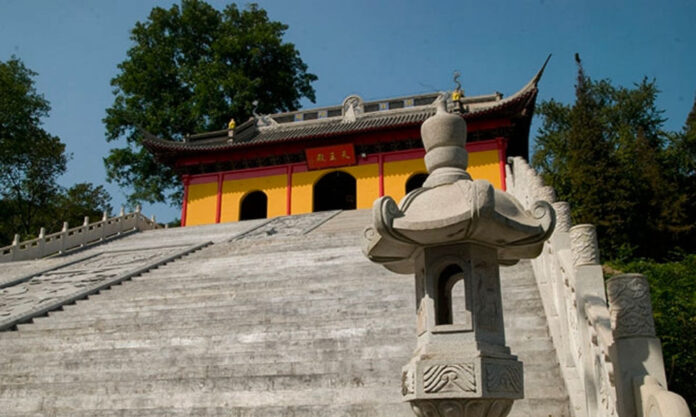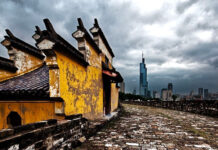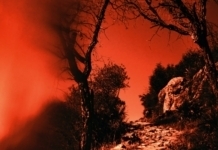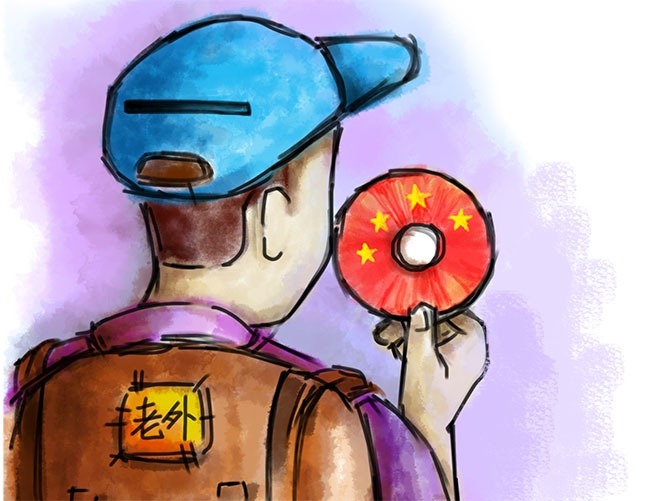Anyone who has visited more than two temples in China will have noticed that most are architecturally and structurally similar.
While the reasoning behind this goes unbeknownst to many, it was the director of my Chinese language program who explained to me that the point of such similarities is to inspire certain feelings and connections within the devotee, so no matter where, they can feel the sense of calm and peace derived from familiarity.
Whatever the religion or the type of temple; all temples share a common purpose; bringing one closer to a higher deity or being. Their design and layout reflect this, resulting in Taoist and Buddhist temples often looking very similar, though with minor variances.
In Taoist temples, two statues of a dragon and a tiger can be found by the front entrance acting as temple guards, whilst in Buddhist temples these guards take the form of two giants sat in the same pose as the Buddha himself.
Another difference that exists between the houses of worship for these Eastern belief systems is the style of temple murals. In Taoist temples the religious spirit within the murals is stronger and the tales depicted are stories familiar to the Chinese public, while Buddhist temples do not have such a pronounced religious atmosphere.
Temple architecture and décor hold a variety of symbolic and important meanings for devotees across the nation. Chinese architecture utilises a combination of rectangular shapes that differ in size and position according to each shape’s importance in the organic whole.
Within temples, and many other types of traditional structure in China, units of space lie according to an axis and follow the properties of symmetry and balance.
Outlying buildings then flank each side of the main structure like wings to reflect the importance of the central axis.
Wood is mainly used in temple structure as it is a natural element historically representing life. Colourful and eye-catching murals also play an important role in establishing a specific type of atmosphere, holding symbolic meaning as well as aesthetic appeal.
The traditional wall paintings can depict a number of myths and stories ranging from mythical beasts to commonly known folklore and landscapes. Although each component of China’s temples has its own symbolic importance, each aspect comes together in order to provide devotees with a direct connection between humanity and heaven, as well as a feeling of harmony among one another.
Structures and their positioning outside of the main temple hall are also important aspects of establishing the correct “feng shui”. Throughout China, temples serve as home to many priceless relics including paintings and wooden artifacts that can be easily destroyed or stolen.
Therefore, many temple complexes have high walls in order to protect the priceless artefacts kept within. These walls are normally painted bright gold or maroon; the traditional colours of ancient emperors and royalty. As well as providing a physical barrier between the priceless heirlooms and potential damage or thieves, the wall also serves a more harmonious purpose, acting as a spiritual barricade that seeks to protect the peace and calm of the spiritual sanctuary against the noise, fuss, and distractions of the ever-modernising world.
Additional feng shui walls are employed to protect the temple and devotees from “bad winds” and evil spirits. These walls usually block any type of straight access to the main entrance since it is widely believed that bad spirits can only travel in straight lines. Therefore, for the sake of material and spiritual safety, devotees must usually circumnavigate a large wall before entering the realm of spiritual solace.
Orientation is also very important in the design of temple complexes; most temples face south as it was once believed that south was the direction of the celestial and powerful. Throughout China’s many imperial dynasties the emperor would usually face south while his subjects were made to face north.
No matter whether you travel China’s urban jungle or her peaceful farmlands, the Gobi dessert or Yellow mountain, you will always be able to find this familiar yet intriguing spiritual sanctuary that will bring you back to a time of religious devotion and peaceful harmony.
Despite China’s speedy leap into a technologically advanced modern society, this spiritual observance continues to exist. The Middle Kingdom’s vast temples serve to remind locals and foreign travellers alike of her amazing history and the importance many Chinese place on their connection with a higher power.














